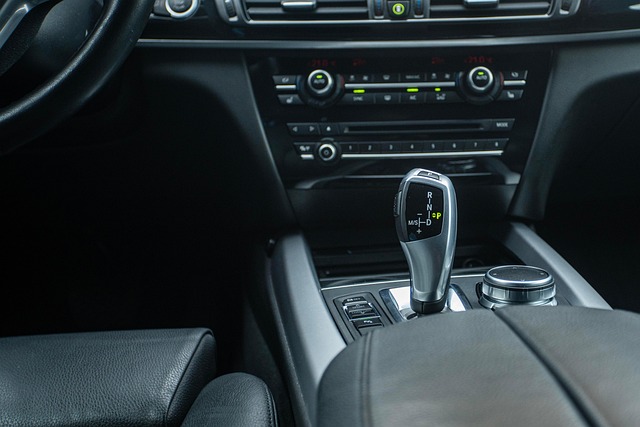# AI Technology Advancements: Exploring Breakthroughs That Are Shaping Our Future and Everyday Lives
Artificial Intelligence (AI) is no longer a futuristic concept; it is an integral part of our daily lives and industries, particularly in the automotive sector. As the automotive industry embraces AI technology, we witness transformative changes that enhance manufacturing processes, improve vehicle performance, and redefine user experiences. This article explores how AI is revolutionizing the automotive industry, focusing on smart manufacturing, predictive maintenance, autonomous vehicles, supply chain optimization, and intelligent user experiences.
## Smart Manufacturing: Efficiency at Its Best
The integration of AI in smart manufacturing has redefined production lines in the automotive industry. AI technologies, such as machine learning and robotics, streamline operations, reduce waste, and enhance quality control.
### Real-World Example: BMW
BMW has implemented AI-driven robotics in its manufacturing plants. These robots work alongside human workers, handling repetitive tasks with precision. By analyzing data from the production line, AI systems can identify inefficiencies and suggest improvements, leading to a more streamlined manufacturing process. This not only speeds up production but also ensures higher quality standards.
### Key Benefits:
– **Enhanced Efficiency:** AI systems can analyze vast amounts of data to optimize production schedules.
– **Quality Control:** AI algorithms can detect defects in real-time, reducing the chances of faulty products reaching consumers.
– **Cost Reduction:** Automation leads to lower labor costs and minimized waste.
## Predictive Maintenance in Vehicles: Proactive Care
Predictive maintenance is another area where AI is making significant strides. By analyzing data from vehicle sensors, AI can predict when a part is likely to fail, allowing for timely maintenance and reducing the risk of breakdowns.
### Real-World Example: Toyota
Toyota has embraced predictive maintenance through its connected vehicle technology. By collecting data from various sensors, Toyota can monitor vehicle health and alert drivers about potential issues before they become serious problems. This proactive approach not only enhances vehicle reliability but also improves customer satisfaction.
### Key Benefits:
– **Reduced Downtime:** Vehicles can be serviced before breakdowns occur, minimizing downtime for users.
– **Cost Efficiency:** Predictive maintenance helps in avoiding costly repairs and extends the lifespan of vehicle components.
– **Increased Safety:** By addressing issues proactively, the risk of accidents due to mechanical failures is significantly reduced.
## Autonomous Driving Innovations: The Future of Mobility
Autonomous vehicles represent one of the most exciting applications of AI in the automotive industry. Companies are investing heavily in developing self-driving technology, which promises to revolutionize transportation.
### Real-World Example: Tesla
Tesla is at the forefront of autonomous driving innovations. Its Autopilot feature utilizes AI algorithms to process data from cameras and sensors, enabling the vehicle to navigate, change lanes, and park autonomously. Tesla’s continuous software updates ensure that the system learns and improves over time, moving closer to fully autonomous driving.
### Key Benefits:
– **Safety Improvements:** AI-driven vehicles can react faster than human drivers, potentially reducing accidents.
– **Reduced Traffic Congestion:** Autonomous cars can communicate with each other to optimize traffic flow.
– **Enhanced Accessibility:** Self-driving technology can provide mobility solutions for individuals unable to drive.
## Supply Chain Optimization: Streamlining Operations
AI is transforming supply chain management in the automotive industry by enhancing forecasting accuracy, optimizing inventory levels, and improving logistics.
### Real-World Example: Ford
Ford has implemented AI-driven analytics to optimize its supply chain operations. By predicting demand patterns and analyzing supplier performance, Ford can make data-driven decisions that enhance efficiency and reduce costs. This approach has proven invaluable, especially during disruptions like the global semiconductor shortage.
### Key Benefits:
– **Improved Forecasting:** AI algorithms analyze historical data to predict future demand more accurately.
– **Cost Savings:** Optimized inventory levels reduce storage costs and waste.
– **Agility:** AI allows for quicker responses to market changes, ensuring that companies remain competitive.
## Intelligent User Experiences: Enhancing Driver Interaction
AI is also enhancing user experiences in vehicles, making them more intuitive and personalized. From voice recognition systems to adaptive interfaces, AI is transforming how drivers interact with their cars.
### Real-World Example: Mercedes-Benz
Mercedes-Benz has integrated AI into its MBUX (Mercedes-Benz User Experience) system, allowing drivers to control various functions using voice commands. The system learns from user preferences, creating a more personalized driving experience.
### Key Benefits:
– **User-Friendly Interfaces:** AI-driven systems simplify interaction, making it easier for drivers to access information and control functions.
– **Personalization:** Vehicles can adapt to individual preferences, enhancing comfort and convenience.
– **Safety Features:** AI can monitor driver behavior and provide alerts, promoting safer driving practices.
## Conclusion: The Future of AI in the Automotive Industry
The integration of AI technology in the automotive industry is not just a trend; it is a fundamental shift that is reshaping how we manufacture, maintain, and interact with vehicles. As companies like Tesla, BMW, and Toyota continue to innovate, we can expect even more advancements in smart manufacturing, predictive maintenance, autonomous driving, supply chain optimization, and intelligent user experiences.
### Future Trends:
– **Increased Collaboration:** Expect more partnerships between tech companies and automakers to enhance AI capabilities.
– **Sustainability Focus:** AI will play a crucial role in developing eco-friendly manufacturing processes and electric vehicles.
– **Regulatory Developments:** As autonomous driving technology advances, regulatory frameworks will evolve to ensure safety and compliance.
The future of the automotive industry is bright, driven by AI technology that promises to enhance not just the vehicles we drive but also the overall driving experience. Embracing these innovations will be essential for companies looking to stay competitive in this rapidly evolving landscape.











